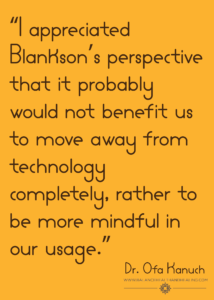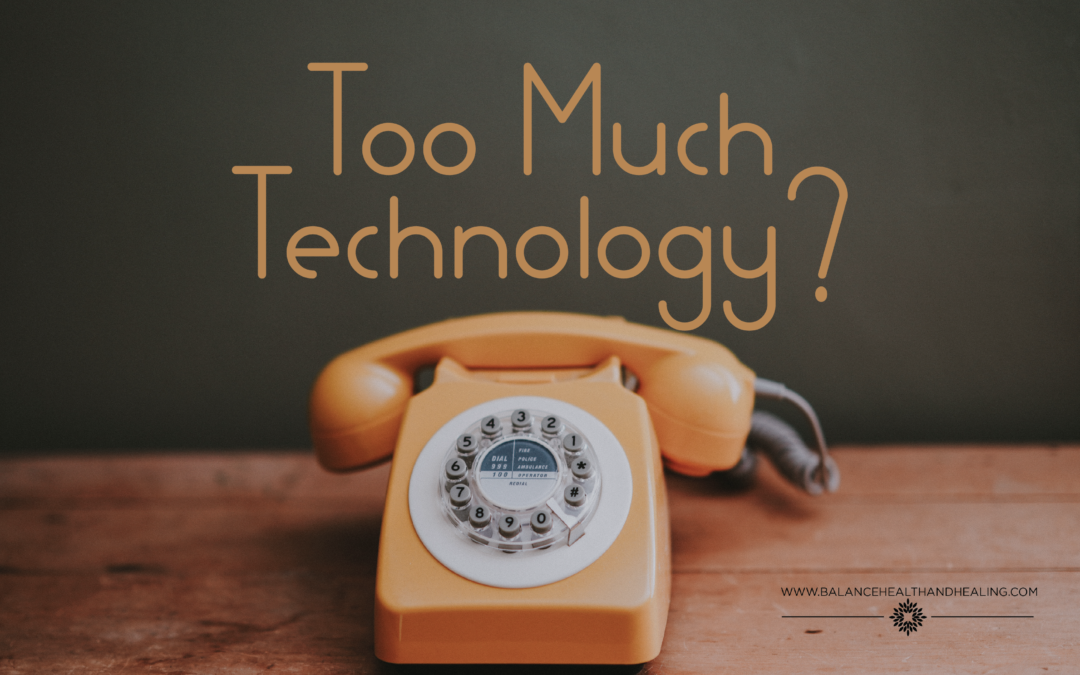I recently watched a new Ted Talk called “The Future of Happiness: Getting Unstuck in the Digital Era” delivered by Amy Blankson just a few weeks ago on May 4th. While acknowledging how technology could be a distraction in our lives, Blankson also spoke of its benefits.
Interestingly, she reported that people pick up their phones approximately 150 times a day. At first I was taken by surprise at that statistic but then I thought about one of my typical days. Standing in line at the grocery store? You can catch me scrolling through my phone. Waiting for an appointment at the doctor’s office? Scrolling. Arrived early at work? Scrolling. Can’t sleep? Scrolling. All day long, I am instinctively scrolling on my phone in the free time that I have even if I am not completely cognizant of what I am looking at. To break that habit, I regularly try to implement social media fasts, placing my phone on Airplane Mode, or simply turning my phone off when I need a break.
Blankson reported findings of a survey following the challenge that the president of The Church of Jesus Christ of Latter Day Saints gave to 8.5 million women to participate in a social media fast for ten days. About 2,000 women responded and their results showed:
- 82% of women did not want to participate in the fast and only did so to follow the prophet or to alleviate guilt
- 60% felt more productive
- 55% were more present with friends and family
- 45% reported an increased focus
- 41% reported being more at peace
- 41% were happier
- 40% reported better sleep
- 14% exercised more
- 13% reported less back/ neck pain
I found it interesting that so many women did not want to participate; yet they did so because of their desire to adhere to a spiritual leader and/or to minimize guilt. I found myself wondering if or how this statistic would have been different if the challenge and follow-up survey were given to men. I was fascinated that 13% of women reported less back/neck pain, which is consistent with research that shows higher rates of back/neck pain with excess use of a laptop or computer.
 I appreciated Blankson’s perspective that it probably would not benefit us to move away from technology completely, rather to be more mindful in our usage. She offered several ways that we could be more intentional in our use of technology:
I appreciated Blankson’s perspective that it probably would not benefit us to move away from technology completely, rather to be more mindful in our usage. She offered several ways that we could be more intentional in our use of technology:
Awareness: Tuning in rather than zoning out
Transformation: Moving from mindfulness to mindful response
Magnification: Amplifying positive examples
My invitation for you is this: First, take a simple inventory of your current technology usage. How often are you picking up your phone? How long are you on social media? How long do you spend watching Netflix? If you are surprised with the amount of time you are spending on technology, set an alarm to tell you when to get off, or put your phone on airplane mode temporarily so that you will not receive any incoming messages.
Then, be mindful of how you feel after you use technology. How do you feel after seeing posts on social media or watching specific shows? If you feel uplifted, inspired, and positive vibes, then that’s great. On the other hand, if you feel insecure, degraded, or objectified, then this is an opportunity for you to make changes. For example, maybe unfollowing or muting accounts on social media will be helpful for you.
We are so fortunate to live at a time where we could have technology at our fingertips. Among all the benefits, I appreciate that it allows me to stay connected to my loved ones who are scattered across the globe. However, in the words of Aesop, “It is possible to have too much of a good thing.”

